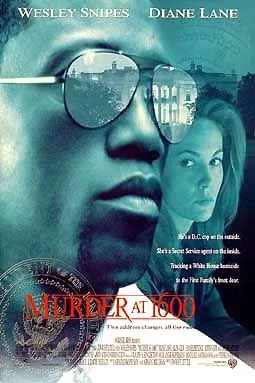Cry_Wolf (2005)
Running time: 90 minutes (1 hour, 30 minutes)
MPAA – PG-13 for violence, terror, disturbing images, language, sexuality, and a brief drug reference
DIRECTOR: Jeff Wadlow
WRITERS: Jeff Wadlow and Beau Bauman
PRODUCER: Beau Bauman
CINEMATOGRAPHER: Romeo Tirone
EDITOR: Seth Gordon
COMPOSER: Michael Wandmacher
HORROR/THRILLER/MYSTERY
Starring: Julian Morris, Lindy Booth, Jared Padalecki, Jon Bon Jovi, Sandra McCoy, Kristy Wu, Jane Beard, Gary Cole, Jesse Janzen, Paul James, Ethan Cohn, and Michael Kennedy
The subject of this movie review is Cry_Wolf, a 2005 horror film and murder mystery from the team of Jeff Wadlow and Beau Bauman. The film focuses on eight high school seniors at a posh boarding school whose lies catch up with them after they create a fake serial killer prank.
Tossed out of his old school, Owen Matthews (Julian Morris) arrives at prestigious Westlake Prep where he falls in with the school’s unofficial and self-appointed “liar’s club.” Playing on the fear caused by a young woman recently found murdered in the woods, the friends decide to expand the reach of their game beyond campus.
They create an online rumor that the girl’s slaying is just the latest in a long line of killings by a serial killer known as “The Wolf.” Owen and Dodger (Lindy Booth), a female student that he likes, even create an M.O. for The Wolf and describe the kind of victims he prefers to murder after his initial kill, in this case, the girl he supposedly murdered in the nearby woods. However, the club bases the victims on the people they know – each other.
After journalism teacher Rich Walker (Jon Bon Jovi) admonishes him about the dangers of online predators and spreading fear on the Internet, Owen regrets personally sending the initial Wolf rumor into cyberspace. Worse still, someone calling himself “The Wolf” starts sending Owen threats via email and one of the liar’s club turns up missing. Owen and his friends don’t know where their lies end and the truth begins. However, campus officials consider the eight friends to be troublemakers, with Owen the ringleader and the one destined for expulsion. So when the gang cries for help, everyone else views the distress as another hoax perpetrated by bad youths. Nobody believes a liar, even when they’re telling the truth – perhaps, the real Wolf is stalking them.
Co-writer/producer Beau Bauman and co-writer/director Jeff Wadlow’s offbeat horror flick, Cry_Wolf, creates a novel twist on slasher films. The atmosphere is good – occasionally creepy and will sometimes put you on the edge of your seat. A quirky suspense thriller, Cry_Wolf has so many interesting twists and turns, quiet a few of which would make sense in the real world.
The film’s major problem is, of course, Bauman and Wadlow’s script. They try something different and their concept is good. One thing that works is the dialogue and interpersonal dynamics between the high school age characters; it’s sharp, witty, blistering, and dead-on. However, the tense relationship between Owen and his father (played by Gary Cole with a bad English accent) is treated like stock footage.
The script’s big slip up is on the characters themselves, all of which come across as limp or wispy. Some, like Owen and Dodger, are very interesting, but the screenplay is so focused on genre trappings and putting a unique spin on said genre that it doesn’t have time for the kind of rich character play Owen and Dodger both need and deserve. The rest of the participants are intriguing, but are ultimately (or technically, as it turns out) just body count fodder.
That makes Cry_Wolf like so many other scary movies, soft on script even when the story concept is exciting. Still, there is something to be said for trying something new. At the end of the day, Cry_Wolf says that there is something scarier that the unknown killer in the dark. It’s the people we think we know, people with something to hide and scores to settle for the wrongs they think their friends, colleagues, and associates have done them. How far they willing to go and whom they’re willing to manipulate to balance the accounts can chill to the bones.
6 of 10
B
Updated: Sunday, February 09, 2014
The text is copyright © 2014 Leroy Douresseaux. All Rights Reserved. Contact this site for syndication rights and fees.


















